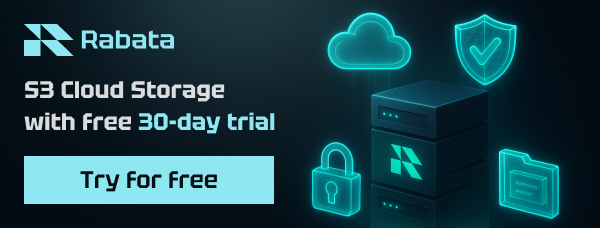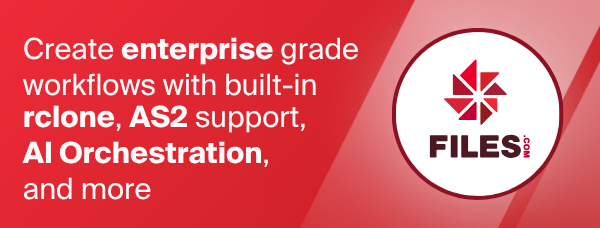rclone rcd
Run rclone listening to remote control commands only.
Synopsis
This runs rclone so that it only listens to remote control commands.
This is useful if you are controlling rclone via the rc API.
If you pass in a path to a directory, rclone will serve that directory for GET requests on the URL passed in. It will also open the URL in the browser when rclone is run.
See the rc documentation for more info on the rc flags.
Server options
Use --rc-addr to specify which IP address and port the server should
listen on, eg --rc-addr 1.2.3.4:8000 or --rc-addr :8080 to listen to all
IPs. By default it only listens on localhost. You can use port
:0 to let the OS choose an available port.
If you set --rc-addr to listen on a public or LAN accessible IP address
then using Authentication is advised - see the next section for info.
You can use a unix socket by setting the url to unix:///path/to/socket
or just by using an absolute path name.
--rc-addr may be repeated to listen on multiple IPs/ports/sockets.
Socket activation, described further below, can also be used to accomplish the same.
--rc-server-read-timeout and --rc-server-write-timeout can be used to
control the timeouts on the server. Note that this is the total time
for a transfer.
--rc-max-header-bytes controls the maximum number of bytes the server will
accept in the HTTP header.
--rc-baseurl controls the URL prefix that rclone serves from. By default
rclone will serve from the root. If you used --rc-baseurl "/rclone" then
rclone would serve from a URL starting with "/rclone/". This is
useful if you wish to proxy rclone serve. Rclone automatically
inserts leading and trailing "/" on --rc-baseurl, so --rc-baseurl "rclone",
--rc-baseurl "/rclone" and --rc-baseurl "/rclone/" are all treated
identically.
--rc-disable-zip may be set to disable the zipping download option.
TLS (SSL)
By default this will serve over http. If you want you can serve over
https. You will need to supply the --rc-cert and --rc-key flags.
If you wish to do client side certificate validation then you will need to
supply --rc-client-ca also.
--rc-cert must be set to the path of a file containing
either a PEM encoded certificate, or a concatenation of that with the CA
certificate. --rc-key must be set to the path of a file
with the PEM encoded private key. If setting --rc-client-ca,
it should be set to the path of a file with PEM encoded client certificate
authority certificates.
--rc-min-tls-version is minimum TLS version that is acceptable. Valid
values are "tls1.0", "tls1.1", "tls1.2" and "tls1.3" (default "tls1.0").
Socket activation
Instead of the listening addresses specified above, rclone will listen to all
FDs passed by the service manager, if any (and ignore any arguments passed
by --rc-addr).
This allows rclone to be a socket-activated service. It can be configured with .socket and .service unit files as described in https://www.freedesktop.org/software/systemd/man/latest/systemd.socket.html.
Socket activation can be tested ad-hoc with the systemd-socket-activatecommand
systemd-socket-activate -l 8000 -- rclone serve
This will socket-activate rclone on the first connection to port 8000 over TCP.
Template
--rc-template allows a user to specify a custom markup template for HTTP
and WebDAV serve functions. The server exports the following markup
to be used within the template to server pages:
| Parameter | Subparameter | Description |
|---|---|---|
| .Name | The full path of a file/directory. | |
| .Title | Directory listing of '.Name'. | |
| .Sort | The current sort used. This is changeable via '?sort=' parameter. Possible values: namedirfirst, name, size, time (default namedirfirst). | |
| .Order | The current ordering used. This is changeable via '?order=' parameter. Possible values: asc, desc (default asc). | |
| .Query | Currently unused. | |
| .Breadcrumb | Allows for creating a relative navigation. | |
| .Link | The link of the Text relative to the root. | |
| .Text | The Name of the directory. | |
| .Entries | Information about a specific file/directory. | |
| .URL | The url of an entry. | |
| .Leaf | Currently same as '.URL' but intended to be just the name. | |
| .IsDir | Boolean for if an entry is a directory or not. | |
| .Size | Size in bytes of the entry. | |
| .ModTime | The UTC timestamp of an entry. |
The server also makes the following functions available so that they can be used within the template. These functions help extend the options for dynamic rendering of HTML. They can be used to render HTML based on specific conditions.
| Function | Description |
|---|---|
| afterEpoch | Returns the time since the epoch for the given time. |
| contains | Checks whether a given substring is present or not in a given string. |
| hasPrefix | Checks whether the given string begins with the specified prefix. |
| hasSuffix | Checks whether the given string end with the specified suffix. |
Authentication
By default this will serve files without needing a login.
You can either use an htpasswd file which can take lots of users, or
set a single username and password with the --rc-user and --rc-pass flags.
Alternatively, you can have the reverse proxy manage authentication and use the
username provided in the configured header with --user-from-header (e.g., --rc-user-from-header=x-remote-user).
Ensure the proxy is trusted and headers cannot be spoofed, as misconfiguration
may lead to unauthorized access.
If either of the above authentication methods is not configured and client
certificates are required by the --client-ca flag passed to the server, the
client certificate common name will be considered as the username.
Use --rc-htpasswd /path/to/htpasswd to provide an htpasswd file. This is
in standard apache format and supports MD5, SHA1 and BCrypt for basic
authentication. Bcrypt is recommended.
To create an htpasswd file:
touch htpasswd
htpasswd -B htpasswd user
htpasswd -B htpasswd anotherUser
The password file can be updated while rclone is running.
Use --rc-realm to set the authentication realm.
Use --rc-salt to change the password hashing salt from the default.
rclone rcd <path to files to serve>* [flags]
Options
-h, --help help for rcd
Options shared with other commands are described next. See the global flags page for global options not listed here.
RC Options
Flags to control the Remote Control API
--rc Enable the remote control server
--rc-addr stringArray IPaddress:Port or :Port to bind server to (default localhost:5572)
--rc-allow-origin string Origin which cross-domain request (CORS) can be executed from
--rc-baseurl string Prefix for URLs - leave blank for root
--rc-cert string TLS PEM key (concatenation of certificate and CA certificate)
--rc-client-ca string Client certificate authority to verify clients with
--rc-enable-metrics Enable the Prometheus metrics path at the remote control server
--rc-files string Path to local files to serve on the HTTP server
--rc-htpasswd string A htpasswd file - if not provided no authentication is done
--rc-job-expire-duration Duration Expire finished async jobs older than this value (default 1m0s)
--rc-job-expire-interval Duration Interval to check for expired async jobs (default 10s)
--rc-key string TLS PEM Private key
--rc-max-header-bytes int Maximum size of request header (default 4096)
--rc-min-tls-version string Minimum TLS version that is acceptable (default "tls1.0")
--rc-no-auth Don't require auth for certain methods
--rc-pass string Password for authentication
--rc-realm string Realm for authentication
--rc-salt string Password hashing salt (default "dlPL2MqE")
--rc-serve Enable the serving of remote objects
--rc-serve-no-modtime Don't read the modification time (can speed things up)
--rc-server-read-timeout Duration Timeout for server reading data (default 1h0m0s)
--rc-server-write-timeout Duration Timeout for server writing data (default 1h0m0s)
--rc-template string User-specified template
--rc-user string User name for authentication
--rc-user-from-header string User name from a defined HTTP header
--rc-web-fetch-url string URL to fetch the releases for webgui (default "https://api.github.com/repos/rclone/rclone-webui-react/releases/latest")
--rc-web-gui Launch WebGUI on localhost
--rc-web-gui-force-update Force update to latest version of web gui
--rc-web-gui-no-open-browser Don't open the browser automatically
--rc-web-gui-update Check and update to latest version of web gui
See Also
- rclone - Show help for rclone commands, flags and backends.


